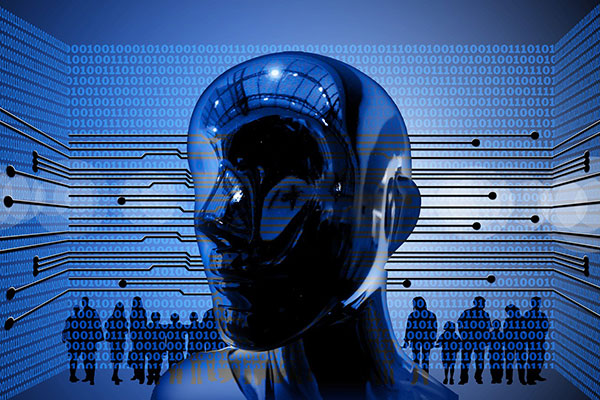Whether personal assistants like Alexa or Siri, smart driving or costumer support — products and services based on artificial intelligence find more and more their way into our daily lives. And at the latest since Google announced a switch from mobile first to AI first in their IO Keynote we know where this route is taking us. Some weeks ago we had a booth at the World Usabilty Day 2017. This year’s topic: Artificial Intelligence. Besides listening to numerous interesting speakers, we used the chance to exchange some thoughts about Human Centered Design in the context of Artificial Intelligence. Following we present you 4 thoughts to keep in mind when designing with AI for human beings.
Establish a trustful relationship
Who do you trust more, your friend with experience and gut feeling — or a machine taking decisions based on data? Establishing a trustful relationship between the machine and the human is the key task when designing a solution based on AI for a human being. People want to feel safe and secure. Therefore designing for trust means designing in an understandable and traceable way — without any blackboxes. Be honest, avoid irritations and try to create pleasant surprises instead. Looking at chatbots people want an assistant with personality, but they remain aware that there is a machine on the other side. Statements by a chatbot that are obviously untrue like emotional expressions, don’t work. A machine remains a machine, don’t try to fake nonexistent feelings in the interaction with it.
In design thinking our approach is to focus on human needs or problems and to balance aspects of feasibility and viability with them in order to create human centered innovation. In our daily enterprise business we experience another reality. Many companies have data and want to use it with an emerging technology, namely AI. The technology is in the focus and in the second or even third step the human need is coming into account. Fair enough. But using a chatbot is not the answer to every question — just because it is technologically possible and en vogue. So question yourself: Which problem do you want to solve and could AI solve this problem in a unique way.
Keep the human in the loop
This leads us to the next approach: keep the human always in the loop. In this case, we are not just talking about the developing phase and the purpose of solving a pressing problem in general, but also about the way of creation and cooperation between machine and human. Ideos CEO Tim Brown mentions in an article that “we need to make these systems super smart to evolve and learn — but they need to learn in collaboration with human beings.” And this is what has to be underlined here: When we talk about a trustful relationship, we also talk about a co-existence of machines and humans. And especially when you don ‘t know each other so well yet, establishing a relationship has a lot to do with the language or way of communication you use. So, again looking at chatbots, don’t reply ahead of your user, even though you might already know the answer. Use a cooperative approach, establish suitable principals and stick to conversational rules. Here we are talking about insecurity, about fears and barriers of change. Take your user seriously and make him always feel in control of technology — not the other way round. There is a fine line between concerned irritation and a satisfied user experience.
Watch out for the context
When designing with AI, everything depends on the context — and that’s why it is even more important to design with a human centered approach. When you want to create value for your user, you have to understand who he is, in which situation he is in and why he has a specific problem or need. So having contextual awareness, putting the different pieces together in order to builda whole end-to-end experience is the key characteristic in creating intelligent solutions and taking intelligent decisions which matter. The information you need in order to do that, will more and more be sourced through sensors and the very interaction with the user. Accordingly an important condition for how powerful AI will be, is to what extent users will agree to the collection of their data and to what extent they will surround themselves with sensors for data collection. AI for now works best where there is a lot of data and where it knows at which data patterns to look at.
Conclusion
After the AI Winter was announced, the AI summer is now clearly ahead of us. And this is going to be revolutionary, even if it comes in a stealthy kind of way. AI is going to influence every part of our daily lives in the upcoming years. So clearly responsibility is a huge thing here. Starting with an human centered approach focussing on the users needs and problems is a good starting point and basis.
